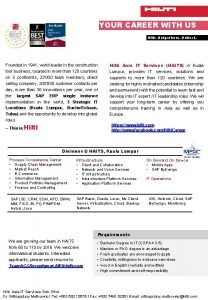Platinum Nanoclusters OutPerform Single Crystals CO causes single

- Slides: 1

Platinum Nanoclusters Out-Perform Single Crystals CO causes single crystals to fracture, stability to increase in nanoclusters. • Single crystal platinum surfaces were examined using high-pressure scanning tunneling microscopes (STM) and ambient-pressure x-ray photoelectron spectroscopy (AP-XPS) at ALS Beamlines 9. 3. 2 and 11. 0. 2 to study catalysts’ structure and composition under realistic conditions. • Surfaces were structured as a series of flat “terraces”—or atomic steps— thatact as active sites in metal catalysts. • Platinum surfaces were covered with carbon monoxide (CO) gas, a reactant involved in many industrial catalytic processes. Under high pressure— comparable to industrial technologies’ operating pressures—platinum surfaces changed their structure dramatically when exposed to highcoverage reactants. • High densities of CO molecules reversibly altered the catalytic surfaces of platinum single crystals. As CO coverage increased, terraces widened; when coverage approached 100%, they fractured into nanometer-sized clusters owing to increased lateral repulsion between molecules. • The resultant nanoclusters become more stabilized as CO molecules are adsorbed at high densities because they provide a relief to the strong lateral repulsion experienced in flat areas of the metal surface. • Observing catalytic surfaces under actual reaction conditions has revealed new possibilities for products like fuel cells where efficient catalysts are essential. F. Tao et al. , Science 327, 5967 (2010) www. als. lbl. gov/als/science/sci_archive/216 -platinum-catalysts. html In these STM images of a platinum catalyst, (A) shows the terraced surface under ultrahigh vacuum, (B) as the CO pressure increases, the amount of adsorbed CO also increases and causes the terraces to widen. (C) When coverage is near 100% at pressures of one torr, the terraces fracture into nanoclusters. (D) Enlarged view shows the triangular shape of the nanoclusters, two of which are marked by red lines.

